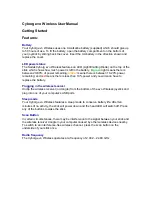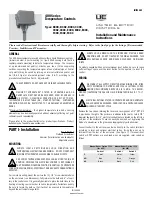
28
Hardware Installation and User’s Guide
Hardware Specifications and Features
The information in
Table 3-4
is based on the
STA-Endorsed Terms & Terminology for
SCSI Parallel Interface Technology
specification published by the SCSI Trade
Association. It can be viewed at:
http://www.scsita.org/terms/scsiterms.html
.
3.4.2
Support for Non-Hard-Disk-Drive SCSI Devices (Non-Direct-
Access Devices)
RAID Controllers pass through to the host operating system direct access to non-direct-
access SCSI devices which are connected to a SCSI bus (channel) of the RAID Controller.
The RAID Controller passes through all control of these devices to the host operating
system.
See
Section 3.1.1
for information about supported non-HDD devices for the ICP RAID
Controller products detailed in this guide.
3.5
Array Roaming Compatibility
Array Roaming allows users the ability to move a complete RAID array from one
computer system with a RAID Controller to another computer system with a RAID
Controller and preserve the RAID configuration information and user data on that RAID
array.
Wide Ultra 2
(4)
80
16
(4)
12
16
Ultra160 (Ultra 3)
160
16
(4)
12
16
Notes:
(1) May be exceeded in Point-to-Point and engineered specific applications.
(2) Use of the word “Narrow”, preceding SCSI, Ultra SCSI, or Ultra2 SCSI (i.e. Narrow SCSI) is op-
tional.
(3) LVD was not defined in the original SCSI standards for this speed. If all devices on the bus sup-
port LVD, then 12-meters operation is possible at this speed. However, if any device on the bus is
singled-ended only, then the entire bus switches to single-ended mode and the distances in the sin-
gle-ended column apply.
(4) Single-ended is not defined for speeds beyond Ultra.
After Ultra 2 all new speeds are wide only.
Table 3-4. Supported SCSI Device Standards
SCSI Drive
Standard
Bus Speed
(MB/Sec)
Bus Width
(in Bits)
Maximum Cable
Length (meters)
(1)
Maximum Devices
per SCSI Channel
Single-
Ended
LVD















































